You know how sometimes, no matter how many vocal doubles and harmonies you record, they just don't quite blend like you want them to? Maybe your singer nails the lead vocals but just can't quite get those background harmonies right?
Don't worry, we've all been there! And let me tell you, vocal harmonizer pedals can be real lifesavers in these situations. They might even save your song!
And hey, if you're performing live, these tiny but mighty pedals can be your best friend. They'll help recreate that full, rich sound from the studio recording.
Even if you're using stems of your background vocals live, they might not always have that same flawless compression they had on the album.
That's yet another reason to layer in some live vocals - it'll help you get that rich, powerful sound you're after in your set.
Top 3 - Vocal Harmonizer Pedals
Preview | Product | Price |
|---|---|---|
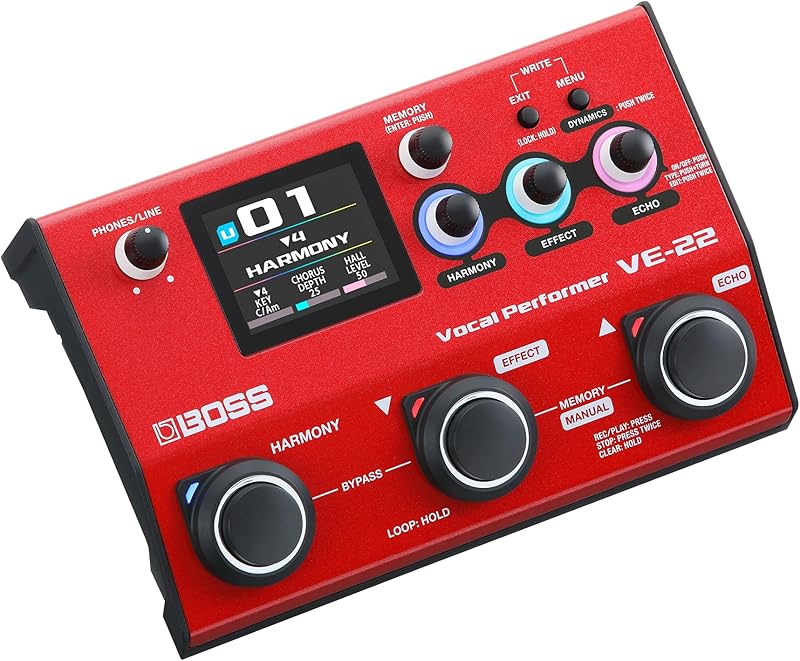 | ||
Now, let's talk about some of my favorite vocal harmonizer pedals that make a difference.
6 Vocal Harmonizer Pedals Worth Considering
1. TC-Helicon VoiceTone H1
The TC-Helicon VoiceTone is a gem that offers vocalists the thrilling pedal board sound that's usually the guitarist's territory. Its interface is a breeze to use - neatly organized and clearly labeled.
Plus, it comes with a guitar-sensing input detector to make sure your harmonies are always in sync with your guitar chords, keeping everything nice and in tune.
In many concerts, it’s typically the guitar player and lead singer who take the main vocal roles, with the keyboard player chipping in as the third vocal. But with this nifty device, you can dial in not one, but two layers of harmony.
It’s got a simple dial that lets you pick if the harmony will be above or below and by how many octaves or intervals - all depending on the chord sensor.
What I really love is that they've included a mix knob to blend dry and wet signals - a total lifesaver for live performances. In the studio, it helps you keep a consistent sound across multiple tracks.
Don't let its compact size fool you. The TC-Helicon VoiceTone delivers top-notch sound quality - think Neutrik XLR in and out, and a fantastic A/D conversion to give you studio-level rack mount sound in a portable package.
I frequently use this pedal and find it pairs perfectly with the TC-Helicon MP-85 microphone, which I also have. For those looking to take it up a notch, this device is designed to be versatile - it has an instrument input that can be linked to chain additional VoiceTone single units.
Especially for those who often perform acoustic sets in intimate venues like coffee shops, this device can be a game-changer. It gives your music that lush vocoder feel, adding a dash of spice to your performances.
2. BOSS VE-22
The VE-22 vocal effects processor has quickly become a favorite of mine. The layout is super user-friendly with three stomp pedals, making it easy to navigate through all the features and functions.
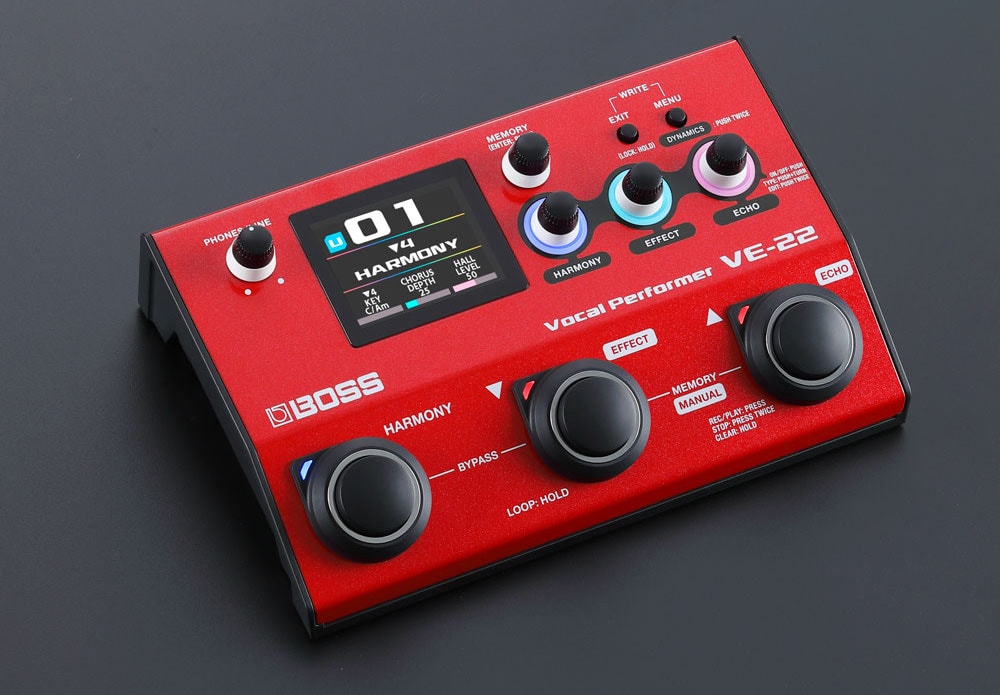
BOSS VE-22
Plus, it comes with a pretty nifty phrase looper that lets you control the start and stop of your phrasing, and even change presets.
But this gem isn't just a simple vocal pedal. Oh no, it's a total powerhouse packed with 50 factory presets, 99 user presets, and a 37-second looper. Besides being a fantastic harmonizer, it throws in some excellent compression, reverb, and delay into the mix, which makes experimenting and creating lush vocals a dream.
I find myself reaching for the VE-22 often because it includes these cool distortion and radio filter-like effects that I love using on vocals at the start of live shows. It lets you create those awesome Pink Floyd-like long tail reverbs with distortion that adds a unique flavor to your gig.
The VE-22 is so much more than just a harmonizer; it's a full-blown vocal effects processor, almost akin to an Eventide H90. It's like having a rack mount with batteries on stage, pretty neat, right?
And it's not just for live performances. It's also fantastic for studio use as it supports phantom power for condenser mics. This means you can use high-quality vintage mics like the Neumann U87 and achieve an even more impressive sound.
The only thing that could use a little tweaking is the real-time pitch correction. Although it's much more sophisticated than its predecessor (the VE-20), it doesn't quite hit the mark like AutoTune or Melodyne. But with so many other fabulous effects like the double tracker, it's not really a deal-breaker. Worth mentioning, but definitely not a reason to pass on this little powerhouse!
3. TC-Helicon Harmony Singer 2
You might be overwhelmed by the numerous TC-Helicon pedals and unsure about their differences or where to start. This is understandable, and to TC Electronics' credit, each pedal is distinct enough to justify its existence.
For instance, the Harmony Singer 2 adds a stunning reverb algorithm, compression, adaptive EQ, and noise gate to your vocal harmony processor. This is something you'd expect from a company like TC-Electronics.
The vintage look of the pedals, with the blue color and knobs, is really cool and reminds me of the old FullTone pedals. Despite its simple appearance, there's a lot packed into this little device.
Like its younger sibling, the VoiceTone H1, the HS2 has a harmonizing switch on the left. This lets you choose the type of harmony you want. It is also capable of creating three-part harmonies and low-end drones, which can be fantastic for cinematic work.
One thing I love about this pedal is the quality and variety of its reverb types. I've used TC-Electronics reverbs before, and they've always been top-notch.
They must have incorporated some of that magic into this pedal with the added algorithms. Yet they still managed to make it small, lightweight, and battery-operated.
It's perfect for keyboard players like me. I can place it on top of my keyboard for easy access to different settings during a show.
I also keep it on top of the mixing console at the studio and wire it as a send-and-return effect because I love the reverb so much.
The only thing I wish TC would add is distortion, as it would be cool to create some unusual harmonic ambient vocals with these reverbs.
4. TC-Helicon VoiceLive Play
The VoiceLive Play is a robust professional pedal by TC-Helicon. It features a hybrid look between a Strymon and an Eventide pedal.
It has three stomp switches, which allow you to navigate the different features live without using your hands. This is particularly useful if you’re using more than one pedal while performing.
For instance, I use this pedal alongside the Harmony Singer2. While I use my hand to switch reverbs on the fly for one, I keep the other on the floor by my sustain pedal, making it easy to navigate.
For those with serious live sets, this pedal comes with 200 presets that you can easily store and access via the rotary knob, arrow buttons, or stomp switches.
The looper is easy to use and includes an undo and redo function - a must-have feature to avoid playing a bad loop live. The looping time has also been doubled, and you can update it easily with firmware.
I appreciate TC's trend of adding proper XLR connections for all inputs and outputs. I believe in the grounding and better sound quality provided by XLR cables versus TRS or unbalanced.
The pedal also includes a new type of harmony engine called Natural Play. It effectively detects the best way to harmonize your vocals expressively.
For modern pop, it offers a great hard-tune algorithm, which is similar to the old T-Pain Autotune preset used by many rappers.
The only surprising drawback is that you can't run it on batteries. Although it's easy to get a strip and connect all your other gear live, power issues on stage can occur when there aren't enough extension cords or power strips to make everything work properly.
5. FLAMMA FV04
FLAMMA is a relatively new company in the pedal industry, but I tried their FV04 pedal and was pleasantly surprised. It's my go-to guitar and vocal pedal for traveling - incredibly light yet ruggedly constructed.
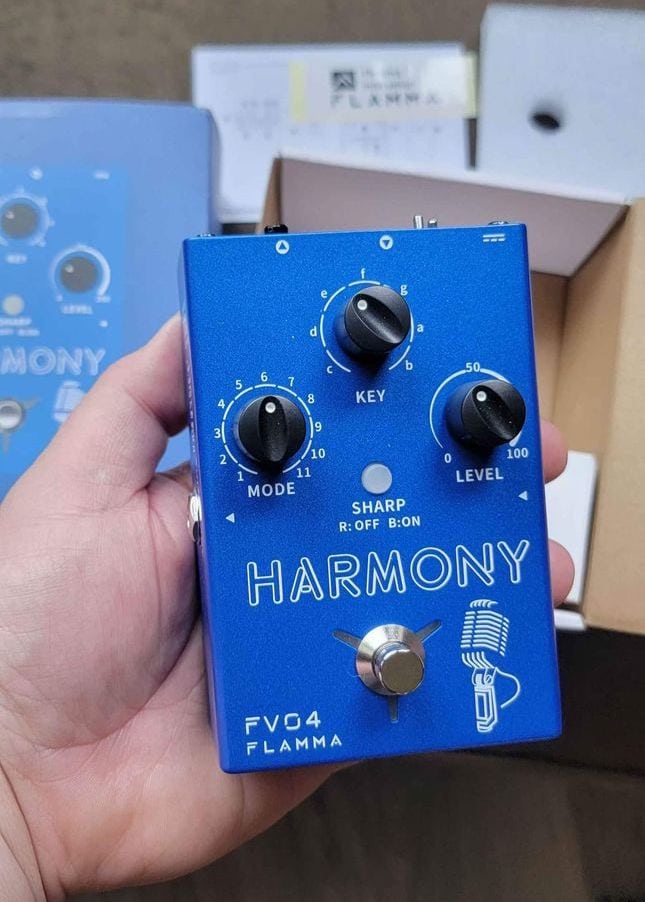
As a frequent user of condenser mics, both live and for tracking, I appreciate the reliable 48v phantom power switch they added. What really sold me on the FVO4, however, is its 11 different harmony modes with major and minor scales.
It's essentially an Autotune rack and harmonizer in a tiny package.
Given its design, it's a great option for solo singers. Unlike some basic harmonizer pedals with chord-following technology, this one also includes a decent reverb.
In many ways, it can act as a mini PA mixer for impromptu café performances or even for presenting your songs to publishers or record label executives in a room. I've set this up in the lounge when showcasing songs to other writers.
I found the vocal harmony texture of this pedal to be quite appealing - a bit more vintage, warmer, and less bright, which I prefer.
I also like the fact that you can daisy chain several of these boxes to get even more complex harmonies and effects. Plus, a lot of the colors are really cool, and FLAMMA makes some other interesting effects pedals that are compatible.
The main downside is the layout of the features - initially, it's a bit confusing having to read instructions on the pedal's side for the modes. And since it has so many different modes, keeping track of each harmony combination can be difficult.
A tiny screen would have been a helpful addition.
6. TC-Helicon Critical Mass
Last but not least, we have one of my favorite vocal harmonizer pedals, the Critical Mass. It offers a unique type of harmonization. It can either double your vocal like an ADT (Artificial Double Tracking) unit, harmonize it or introduce a new type of harmony called Gang vocals.
Gang vocals are epic harmonies similar to Queen-style anthem harmonies, which are actually really cool.
When combined with the ambiance and studio-grade reverbs, it produces a hyper-tripled harmony sound that resembles the huge hall-type sound of vocal chanting. It might seem gimmicky or cheesy at first, but the algorithms they used are truly amazing.
Given the large amount of harmonic content, the developers made sure to include high-quality circuitry in this compact device. It features an excellent mic pre that prevents clipping on the input and an automatic input gain limiter. More importantly, they managed to add ample headroom for the output and processing stage.
Tracking crowd-style vocals can be challenging, especially if you're recording them in a highly reflective environment like a hall or concert hall, or using artificial impulse responses.
While this pedal probably sounds better live than as a way to simulate Gang harmonies on records, it can also be used in unconventional ways.
It doesn't have a distortion feature, which I wish they'd included in all these pedals. However, I've used it with some additional analog filters and distortion units to achieve a unique, Nine Inch Nails-type vocal sound, which was incredible.
I can't wait to perform with it live.
Choosing the Right Vocal Harmonizer Pedal / Effects Processor
When it comes to picking the perfect vocal effects processor, a lot of it boils down to how simple or intricate you want it to be. Both have their perks.
Sometimes, with a live set, there's so much going on that a simple, easy-to-use pedal is just what you need. As long as it sounds great and is reliable, it's the perfect pedal for you!
Now, if you're also planning to use it in the studio, you might want something with a few more options - different presets, and different flavors. And don't forget about the looper feature!
Only a few of these come with built-in looping.
Here are four categories that really made the decision easier for me.
Studio Effects
In my exciting journey to find the perfect vocal effects pedals, I realized it wasn't just about chasing harmonizing effects. I was really looking for a magic tool that would let me recreate the same techniques and effects I could get in a pro studio, without needing to rely on pre-recorded stems.
The perfect pedal for me would also give me superb reverb and delays, which are super important for creating a rich sound texture. Plus, if it could distort, that would be an amazing bonus that would really influence my final decision.
This was pretty important to me because it would open up a whole new world of effects, boosting my creative freedom. So, these were the key things I was thinking about when I was deciding which pedal to get.
Preset Memory
For many of us, playing live can be quite a challenge, and the thought of adjusting sounds for every single song might seem overwhelming. If you're planning to use your pedal for just one song, that's perfectly fine.
However, if you're looking to use it for every song with different settings, I'd honestly suggest considering presets.
And you know what's even better? If your pedal allows you to recall a preset and even name it, ideally with a screen that displays the preset name.
Don't worry too much about the number of presets; what really matters is the ease of recalling them. This is also incredibly useful in studio sessions when you know a certain preset can do the trick.
You simply recall it and start tracking. It saves a lot of time.
Power Type
For me, relying on battery-powered units has become increasingly essential. Why, you ask? Well, I've got this knack for misplacing adapters.
Plus, when I'm performing live or heading to studio sessions, I'm hauling so much gear that it's hard to keep track of which adapter goes with what. Even when I label them, those pesky labels tend to peel off during transit.
Then there’s also your adaptors getting taken by other musicians, mostly by accident. Trust me, it's a real pain to have to plug in a pedal at a club with other performers who share the stage.
But here's the good news - many battery-powered pedals are top-notch these days! If you're hitting the road frequently, this might just be the deciding factor for you.
Of course, it all hinges on the kind of tour support you have and how dependable your stage management is from venue to venue.
Quality Build
If you're considering acquiring an advanced DSP machine in a pedal, it should be as sturdy as a tank. We all know how quickly gear can start getting noisy when it gets tossed around.
Believe me, I've had pedals that failed just from studio use, let alone the harsh conditions of live sound.
So, when you're out there testing these pedals, make sure to thoroughly examine the construction of their knobs and chassis. It's more important than you might think.
Final Thoughts
Harmonizers have come a long way, haven't they? I remember the good old days of using vintage rack mounts like the Eventide H3000. Sure, the harmonies weren't the most genuine, but there was something special about their vibe!
Then everything changed. Companies like Antares and Waves stepped onto the scene with innovative plugins. Suddenly, we could whip up rich harmonies to embellish the lead vocals, and it was as easy as pie!
Fast forward to the present, and these six pedals are the most advanced harmonizer pedals I've ever used. Unlike their predecessors who could sound somewhat robotic, these harmonies are wonderfully natural and expressive.
'Expressive' is the key term here.
The fact that these are portable pedals running on batteries surpasses anything I ever dreamed of. For live music enthusiasts like myself, this is a fantastic addition to your live set. It's a dream come true and incredibly enjoyable!

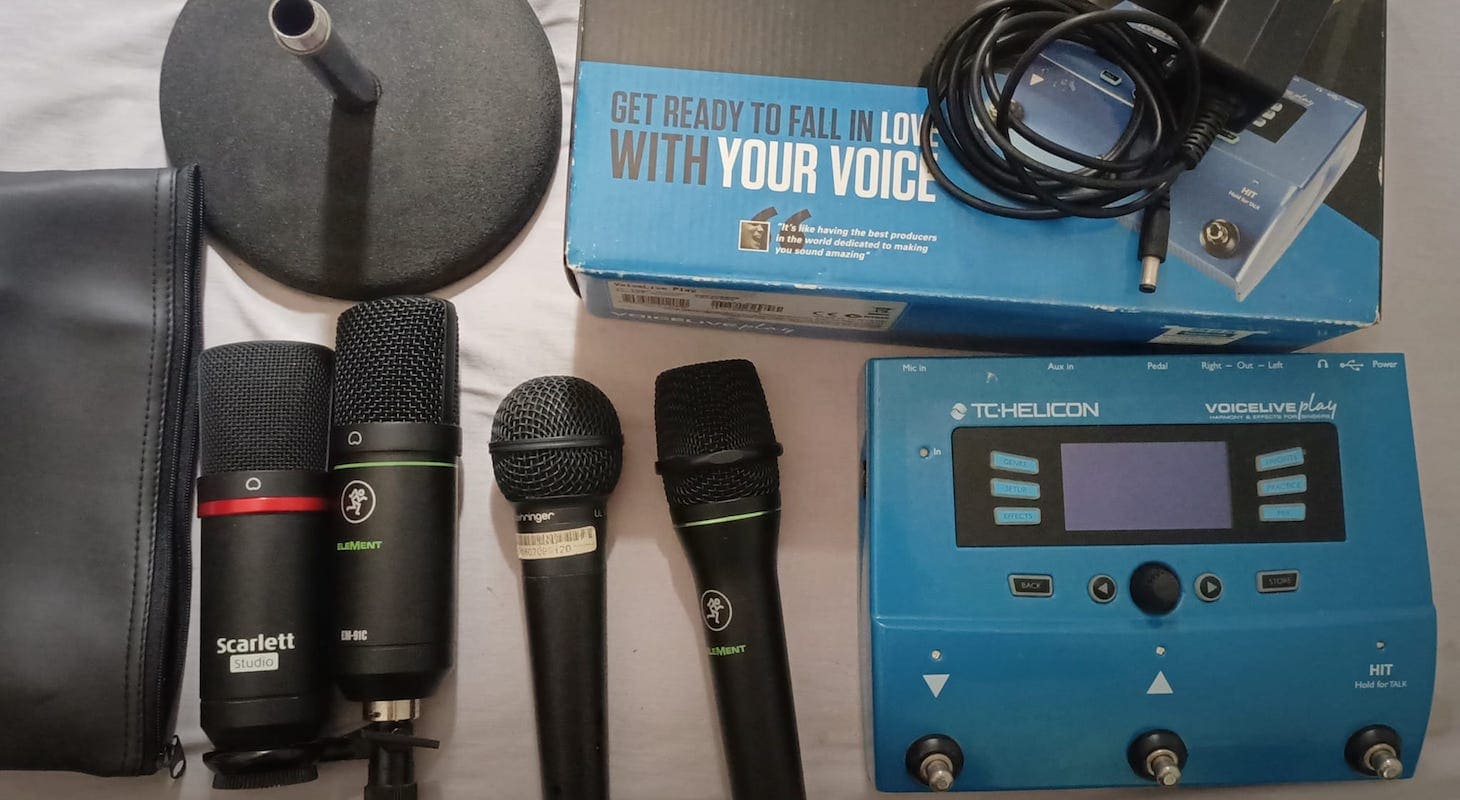
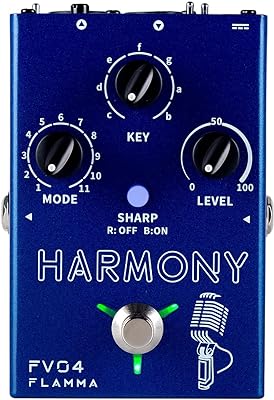
I just bought a TC-Helicon H1. It cannot handle generating harmonies for songs that change key rapidly and frequently. I wish I could program my harmonizer to generate specific pitches. Are there any products you know of that can do that?
I initially had bought that Flamma but it was so ridiculously noisy that I had to eventually upgrade to a TC, which had none of the same issues.
Although they seem affordable, I won’t buy one again.